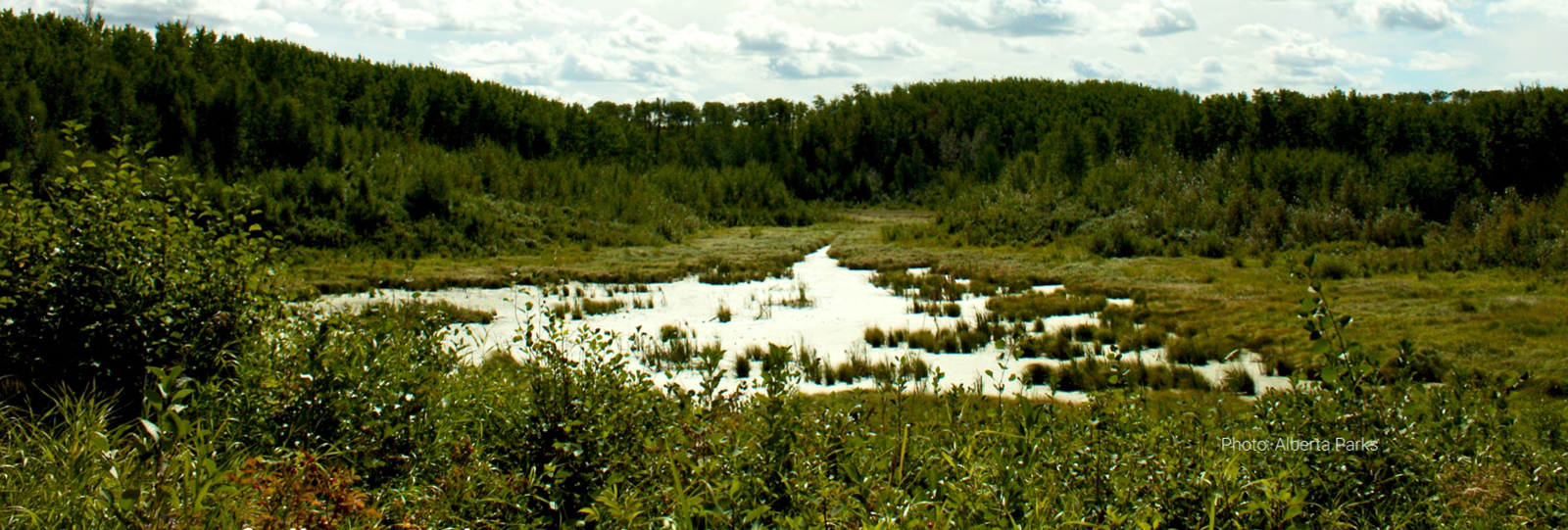Distinct Features
The Beaver Hills/Cooking Lake moraine is a distinct geomorphological feature that encompasses approximately 1600 square kilometres (618 square miles). Representing an island of boreal mixedwood forest, the hummocky “knob and kettle” terrain of the moraine forms a patchwork of depressional areas, many of which support wetlands, small lakes and streams.
The Beaver Hills is an island of Dry Mixedwood Boreal Forest within the Aspen Parkland Natural Region of Alberta. This Dry Mixedwood Sub-region is a transitional zone between the Southern Central Aspen Parkland and the other Boreal Forest subregions to the north. It is also located in the Prairie Pothole region of Canada. This region’s hummocky terrain creates a variety of micro-climates that support a rich mosaic of aspen forest, wetlands, Boreal Mixedwood Forest, sedge meadows, shrubs, and grassland.
The geographical and biodiversity uniqueness of the Cooking Lake Moraine, another term for the area, has earned it a place as a primary priority natural area in the greater Edmonton region for the Nature Conservancy of Canada, Ducks Unlimited Canada and other conservation and land trust organizations.
Biodiversity
Up to 48 mammals, 152 birds and 8 amphibians and reptiles have been reported in the Beaver Hills. Due to the transitional nature and relatively undisturbed habitat of the area, it supports both boreal forest species (moose, black bear, lynx) and parkland species (sharp-tailed grouse, mule deer) creating a very high diversity of wildlife. The abundance of wetlands and lakes throughout the area support healthy and diverse communities of waterfowl and wetland songbirds.
Other wildlife, including piping plover, peregrine falcon, Canadian toad and northern long-eared bat have also been observed in the region. There are also colonial nesting sites for pelicans and herons, significant due to the sensitivity of these breeding birds to disturbance. As a result of these colonies, and the area's importance to migratory waterfowl and shorebirds, the Beaver Hills is home to two nationally recognized Important Bird and Biodiversity Areas (IBAs), as well as Canada’s first established bird sanctuary and is recognized as important to the North American Bird Conservation Initiative.
Did You Know
A number of provincially rare plants and wildlife species occur within the Beaver Hills. In fact, rare species records are more frequent in the Beaver Hills than in the surrounding agricultural plains and are clustered in a band between the protected areas of Elk Island National Park and Miquelon Lake Provincial Park.
The Beaver Hills contains more than one-quarter of all vascular plant species in Alberta, including several rare species. It is one of the few places in the province where North America’s smallest flowering plant, Wolffia, grows.
The frequency of rare species records is likely related to the natural habitat available in the Beaver Hills relative to that in adjacent agricultural lands. The protected areas that run the length of the Beaver Hills are also a factor; the lower level of human use in these zones helps provide secure habitat for these species. Secure populations in turn help foster populations in adjacent, unprotected “buffer” zones.
